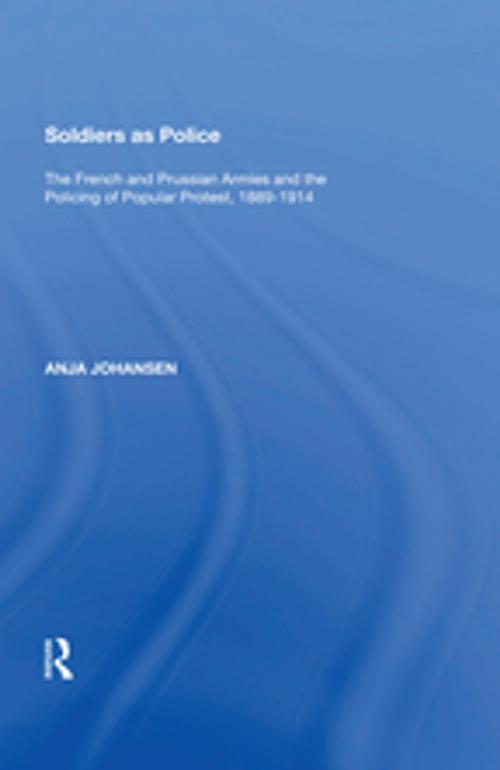Soldiers as Police
The French and Prussian Armies and the Policing of Popular Protest, 1889�914
Nonfiction, History| Author: | Anja Johansen | ISBN: | 9781351148740 |
| Publisher: | Taylor and Francis | Publication: | November 28, 2017 |
| Imprint: | Routledge | Language: | English |
| Author: | Anja Johansen |
| ISBN: | 9781351148740 |
| Publisher: | Taylor and Francis |
| Publication: | November 28, 2017 |
| Imprint: | Routledge |
| Language: | English |
This book looks at the policing of social and political protest and of the role played by the French and Prussian armies in maintaining public order in the years leading up to the First World War. The period 1890 to 1914 was characterised by mass protest in both countries as the political, social and economic order of the German Empire and the French Third Republic were repeatedly challenged by industrial disputes, public protest and riots. In Berlin and Paris, the political elites urgently needed to find ways of sustaining economic growth while maintaining political stability through their management of law and order enforcement. At the same time, public authorities had to carefully consider how protest was to be policed in a way that would not further alienate important groups from the existing regime. Confronted with this dilemma, the use of the French and Prussian armies in maintenance of public order became an increasing concern for the government ministers, provincial administrators and military commanders of both countries. During the 1890s, however, the use of troops for protest policing in these two countries took diverging trajectories. As well as examining the differing methods of policing of social and political protest this work also investigates the internal functioning of the French Third Republic and the German Empire, in particular the relationship between the civil and military elites at the central and regional levels. By examining the use of troops in the two most industrialised areas of Germany and France, the Westphalian Ruhr district and the French region of Nord/Pas-de-Calais, the study describes how the governments and the provincial administrations in the two countries adopted distinctly dissimilar paths towards modernisation of protest policing.
This book looks at the policing of social and political protest and of the role played by the French and Prussian armies in maintaining public order in the years leading up to the First World War. The period 1890 to 1914 was characterised by mass protest in both countries as the political, social and economic order of the German Empire and the French Third Republic were repeatedly challenged by industrial disputes, public protest and riots. In Berlin and Paris, the political elites urgently needed to find ways of sustaining economic growth while maintaining political stability through their management of law and order enforcement. At the same time, public authorities had to carefully consider how protest was to be policed in a way that would not further alienate important groups from the existing regime. Confronted with this dilemma, the use of the French and Prussian armies in maintenance of public order became an increasing concern for the government ministers, provincial administrators and military commanders of both countries. During the 1890s, however, the use of troops for protest policing in these two countries took diverging trajectories. As well as examining the differing methods of policing of social and political protest this work also investigates the internal functioning of the French Third Republic and the German Empire, in particular the relationship between the civil and military elites at the central and regional levels. By examining the use of troops in the two most industrialised areas of Germany and France, the Westphalian Ruhr district and the French region of Nord/Pas-de-Calais, the study describes how the governments and the provincial administrations in the two countries adopted distinctly dissimilar paths towards modernisation of protest policing.















